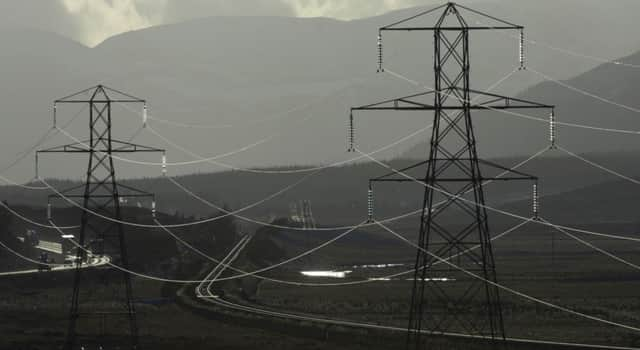Workman crushed to death after safety rule ignored


David McClorey, an excavator operator, died from multiple chest injuries and blunt force trauma as a result of being trapped between his digger and the roller near Kinbuck, Perthshire. The incident happened during work to construct a moorland track before erecting electricity pylons.
Sheriff William Gilchrist, who presided over a four-day fatal accident inquiry, said Mr McClorey, 31, from Stranraer, was killed because he was standing between the roller and his digger guiding the roller-driver, Paul Cooper, 44, as he reversed.
Advertisement
Hide AdAdvertisement
Hide AdThe inquiry at Stirling Sheriff Court in December was told the two men were preparing to siphon diesel from the roller into the excavator after it ran short.
Mr Cooper, of Jedburgh, Roxburghshire, said he reversed his Bomag single-drum roller towards the Komatsu tracked excavator, which was positioned close to a “lip” in the track, about ten to 19 centimetres high, where one section met another.
He said Mr McClorey was out of his machine, guiding him back.
He said: “I wasn’t using my mirrors, I was turned round in my seat, looking over my shoulder, with constant eyesight on David.
“He gave me a ‘high five’ sign to stop, and I turned away from him to put the machine in the stop position, and as I turned round there was a slight movement in the machine. It kind of rocked backwards as if it had come off the edge of the stones.
“When I turned back there was no visual of David.”
He said he jumped out of his roller and ran round and saw Mr McClorey lying on the ground face down. He said Mr McClorey must have moved between the machines after he signalled for the roller to stop.
In a written determination, Sheriff Gilchrist rejected that part of Mr Cooper’s evidence as “inherently implausible”, adding that “it may also have been physically impossible to achieve” and would have involved Mr McClorey “jumping into a gap of less than a metre and closing”.
The sheriff said: “The likeliest scenario is that Mr McClorey was standing between the machines, guiding Mr Cooper’s reversal of the roller. He was in a position he should not have been in if the reversing manoeuvre had been carried out safely.
Advertisement
Hide AdAdvertisement
Hide Ad“To complete this manoeuvre safely required that he would not be positioned between the two vehicles until both were stationary with their engines turned off. This clearly did not happen.
“I am satisfied that both Mr McClorey and Mr Cooper were capable of undertaking the task safely, although clearly that is not what happened.”
He ruled: “There was a defect in the system of working which contributed to the accident resulting in the death: namely that the reversing operation was not conducted in accordance with normal safe practices.”
The incident happened on 11 April 2012. The main contractor on the project was Balfour Beatty and Mr McClorey and Mr Cooper were working for sub-contractors RJT Excavations Ltd.
FOLLOW US
SCOTSMAN TABLET AND MOBILE APPS